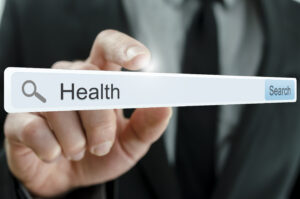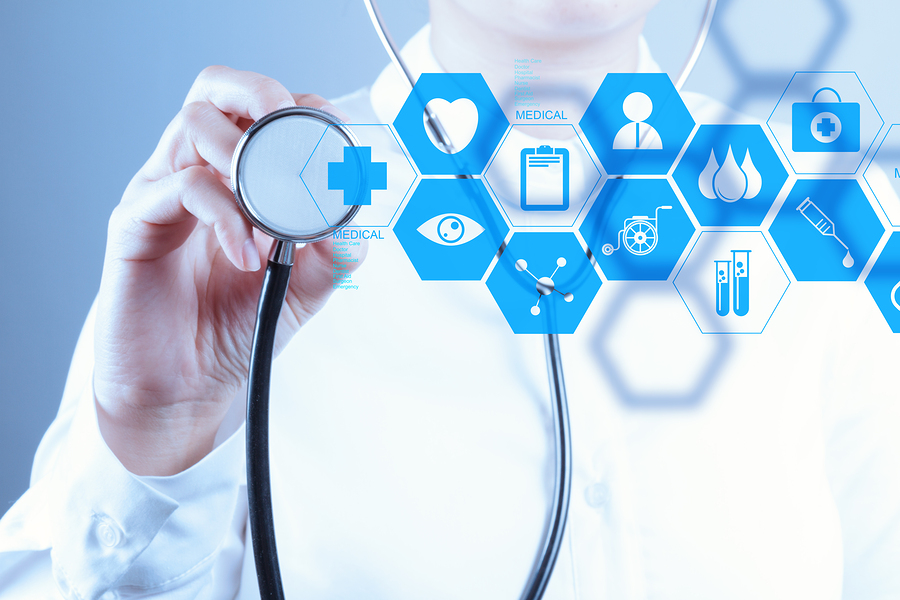Times have certainly changed. We rarely spend a moment disconnected from technology; carrying our smartphones everywhere, tracking various aspects of our health and wellbeing through apps and activity trackers (like Fitbits, Apple watches, etc). On top of that, at the first sign of a niggle, ache or pain, many of us turn to Dr. Google, YouTube and Facebook for answers.
I’ve been a Physiotherapist for several years. As well as that, I have expertise in digital healthcare. I personally like the idea of people engaging with technology as part of health and wellbeing management and also being proactive enough to explore online health information. This modern means of engagement and digital empowerment makes for informed shared-partnerships and proactive conversations between health professionals and their patients. However, without a systematic approach and some quality control this can lead to negative experiences in some cases.
What do health professionals think about the digital age of health information?
You may be forgiven for thinking that physiotherapists, doctors and specialists all baulk at the idea of our patients going online or using technology to track their health. However, that’s not necessarily the case. Whilst like everything, there will always be traditionalists who believe that the Internet is a wasteland of rubbish, often containing dangerous information. However, several health professionals have begun to embrace technology and see it as a way to support healthcare. Please note how I use the word “support” and not “replace”. Many of us are now even using social networking, like Linked In and Twitter, to connect to other health professionals by communicating and learning from them.

Support vs Replace
The operative word here when it comes to being a digitally connected health consumer is to be “discerning”. I’m happy for the health consuming public to commence their health journey by self-tracking their signs and symptoms and to look up online health information. However, I am more concerned about the information we are logging and/or searching for is of good quality and accuracy. By that I mean navigating websites or using mobile apps that aren’t based on scientific evidence, that haven’t been validated, or using apps that aren’t secure and can misuse your data. For example, many apps and websites make claims that aren’t supported with evidence and aren’t medically sound. That’s plain dangerous…
With this in mind, here are some tips that hopefully lead to a more positive and safe digital experience for personal health management:
- Don’t shy away from technology
As we’ve just been talking about, technology is here to stay. Smartphones, websites, activity monitors, mobile apps, etc. are only going to become more intelligent and evolved. Don’t be scared to embrace technology. There’s a certain freedom that comes from being connected and digitally empowered.
- Scrutinise your sources of information
Don’t take everything at face value. Don’t treat all sources as gospel. Learn to be critical of what you find. What are the sources of information you’re reading? Who wrote it? Is this a reputable source? Is it up to date? You might notice now that when you Google common symptoms like back pain, headache, sore muscles, etc. that Google presents you with what is now known as “Health Cards” . Google Health Cards are snippets of health information for common ailments that have been developed in conjunction with reputable health organisations and medical professionals. This has been an endeavour to help bring some quality control to online health seeking.
The same goes for using health apps. Before you download, have you had a look at the information in the app store? When was the app last updated? Who created it? Have you read the apps data privacy policy?
- Try to stick to trusted sources.
Websites that come from major health organisations and/or written by medical professionals are a good start. But even then, remember that no two people are created equal and that all health conditions are a complicated interplay of several factors. Take any information as a grain of salt and use it as a catalyst to have a conversation with a health professional. Not to replace good informed care from a professional. Don’t treat technology as a replacement for safe and knowledgeable care from your health professional.
- Don’t be complacent
Turning to technology as a “quick fix” or “silver bullet” can be tempting but try to avoid this approach. The same goes for any technology that you’re planning to buy. As we said above, the ideal would be to find a balance between Google health information or what your app is telling you, along with a discussion with your health professional, friends and family.
In summary, we live in a different world today. It’s hard to talk about health and wellbeing management without including technology in the same conversation. As a physiotherapist who lives and breathes both clinical care and digital health technology, I don’t think we need to be of the anti-technology vs pro technology schools. Ideally, the best place to be is somewhere in the middle. For the most part, I think you’ll find that health professionals are open to the community of being digitally savvy about health. My final recommendation is to view technology as a starting point to ‘have a conversation’ about your health with your health care professional. I think you’ll find we’re quite approachable.



